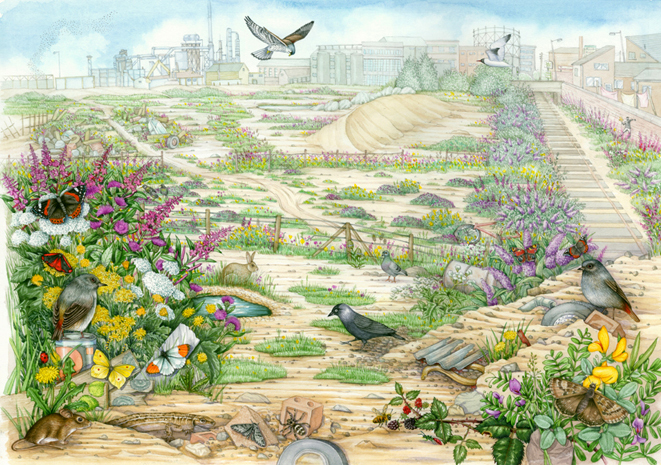Technology: Six things you can do to help live a greener life

Guest blog is by Mark Harris of Awareness Toolkits who wanted to share information about making greener choices when it comes to the technology in our homes. As ever, illustrations are by me.
Technology: Six things you can do to help live a greener life
Living a sustainable lifestyle doesn’t mean you have to eschew technology altogether. Many technological advances are healthy for both you and the environment. Here are six things technology can do to help you live a greener life that’s comfortable as well.

Track and Adjust Energy Usage
You already know how much energy your home uses to provide heating and cooling. However, installing a smart thermostat allows you to adjust your temperature settings via smartphone to save energy. Geofencing tech means your home can even sense when you’re there — or on your way — and adapt accordingly. Higher efficiency also means lower energy bills. Energy.gov explains that you can save up to 10 percent on your energy bill each year just by lowering your thermostat setting seven to 10 degrees. For ideal energy savings, aim for settings of 68 degrees F and 78 degrees (20 C and 25 C) in winter and summer, respectively.

Cancel Phantom Electricity
Did you know that many electronics still suck power even after you turn them off? Many devices — such as TVs, computers, and microwaves — draw power while they’re not operating, a phenomenon called phantom electricity. Fortunately, there’s an easy technology fix for this problem: installing power strips. Plugging devices into power strips lets you turn off electricity at the source, avoiding so-called vampire waste. Plus, surge protector power strips prevent damage to electronics from electrical surges. Many smart power strips also connect to your phone or smart home system so you can shut them off remotely.
Enhance Tap Water
Bottled water is detrimental to natural ecosystems in multiple ways. From destroying habitats to creating tons of plastic and other waste, bottled water isn’t environmentally friendly. It also creates enormous amounts of plastic pollution in the oceans, endangering wildlife like fish, birds, and sea turtles. As The Water Project explains, landfills in the United States are already overflowing with two million tons of discarded water bottles. By reverting to drinking tap water, you can help save animals and the planet. Of course, drinking tap water also costs significantly less than bottled—about one cent per “bottle.” You can use this interactive water-calculator to figure out how much you could be saving; financially and environmentally. But you don’t have to compromise your own health or the flavorless water you enjoy. Modern water filtration systems remove harmful particles from tap water and even enhance the flavor via chlorine removal and mineral additions, Consumer Reports highlights.
Achieve Clean Energy at Home
Powering your home is a necessity, but in many areas, choices are available for greener power. While most Americans rely on petroleum, natural gas, and other nonrenewable sources, renewable energy makes up 11 percent of U.S. consumption. Sustainable power such as that from wind, the sun, and even water can lower your carbon footprint — a carbon calculator can estimate by how much. Even if you can’t install solar panels on your home or put a wind turbine in the backyard, you can choose power suppliers that generate their power via clean sources.

Charge Devices with Solar Equipment
Understandably, solar power is still too expensive for many homeowners at around $12,810 per system in the USA, even with tax credits. However, when it comes to charging your household devices, there is a greener way to generate electricity: miniature solar panels. Plenty of electronics brands offer small solar panel kits for charging your smartphone, tablet, and other devices. You can charge anywhere — even at home — without using a bit of electricity.
Swap Out Lightbulbs for LED Alternatives
Traditional incandescent light-bulbs use a ton of energy. LED bulbs use way less energy than any other type of light-bulb, and you can connect modern versions to your smart home system (or just your phone). Although they’re cheap up-front, the lifetime cost of using incandescent or halogen bulbs can’t compare with the savings you get from LED bulbs. An LED bulb costs $1.26 per year to run, versus a halogen bulb at $6.02 per year, according to Energy Star. (That’s £0.98 and £4.60 in UK money). Plus, the wide range of fun colors and light settings can be a vast improvement over boring halogen or incandescent yellow and white.
Whatever your motivation for living a more sustainable lifestyle, tech has its place in your home and habits. And it’s clear that making greener choices doesn’t mean living in the dark ages.



